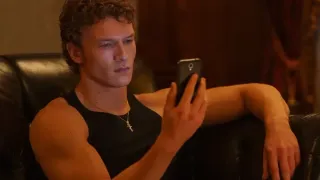November 22, 2014
SF Man Convicted in Choking Death Free After Time Served
Kilian Melloy READ TIME: 3 MIN.
The man convicted of choking to death another man during a 2011 sexual encounter in San Francisco's Buena Vista Park will remain free after a judge last week acknowledged that he'd already served more time in jail than what he was being sentenced to.
In a San Francisco Superior Court hearing that started Thursday, November 13, Judge Donald Sullivan sentenced David Munoz Diaz, 25, to four years and eight months in state prison.
However, Diaz, who was released from custody in September, will remain free since the actual time he's already served combined with the credits he's received outweigh that sentence.
The charred, mostly naked body of Freddy Canul-Arguello, 23, was found with a melted recycling bin in the park just before 5 a.m. June 10, 2011. Diaz was arrested about six weeks later and remained in custody for more than three years.
A jury in August acquitted Diaz of murder, but found him guilty of the lesser charge of involuntary manslaughter. During the trial, Diaz testified that he and Canul-Arguello had been in the park engaging in oral sex and other acts and that he'd accidentally killed Canul-Arguello after he asked to be choked. The maximum sentence for involuntary manslaughter is four years.
Jurors also found Diaz guilty of arson, mutilating human remains, and destroying evidence.
At Thursday's hearing, Deputy Public Defender Alex Lilien requested that the judge dismiss all counts but the involuntary manslaughter.
Sullivan dismissed only the arson count, after considering that keeping it would require Diaz's "lifetime registration as an arsonist," which would "mar his character." He acknowledged Diaz's youth, that he had no prior criminal history, and indicated he agreed with Lilien that "the likelihood of [Diaz] committing such crimes in the future" is "extremely unlikely."
According to Lilien's motion, Diaz isn't a U.S. citizen but a legal permanent resident. His father and other family live in the country. Lilien said in court he was concerned about "potentially grave collateral consequences" for Diaz if only the arson count was dismissed. Diaz is originally from Mexico, as was Canul-Arguello.
Assistant District Attorney John Rowland noted a jury had convicted Diaz of "unlawful homicide," and said, "I really don't believe collateral consequences are of any great import when we have an unlawful homicide."
Rowland opposed any of the counts being dismissed and requested a sentence of five years and four months, but he acknowledged even that would be shorter than the time Diaz has already served.
Thursday, Sullivan also ordered Diaz to pay for Canul-Arguello's funeral and burial expenses, among other costs. The hearing was continued to Friday, when Sullivan did not order Diaz to serve parole time, according to Lilien.
Letter of Support
Another factor Sullivan considered was a letter of support for Diaz from a sheriff's department staffer.
"I've never had deputized staff reach out to me affirmatively" in support of a client, Lilien said.
In the letter, a copy of which Lilien provided to the Bay Area Reporter at the paper's request, the staffer said, "If there was ever an individual that I believe could take an unfortunate time in his life and turn it into a chance to be a productive member of society, David is indeed that individual."
Among other things, he says he'd learned that Diaz "had assisted a deputy who had been assaulted in the psych housing pod ... . The inmate attacked the deputy and David used the deputy's radio to call for assistance and used the deputy's handcuffs to restrain the inmate." He also says Diaz "was always the first to volunteer to work."
The staffer, whose name Lilien redacted, said he wrote the letter "as a private citizen" and not as a sheriff's department representative.
Canul-Arguello's family and friends have said he was a hard worker who liked to have fun. None of them were present Thursday.
Diaz, who wore a black suit Thursday, turned down an opportunity from Sullivan to comment during the hearing, and declined to speak with the B.A.R. as he left court to catch a plane for a weekend trip with his boyfriend, Larry Metzger, who owns the Castro bar the Mix.






